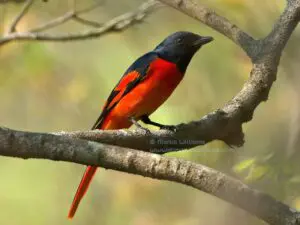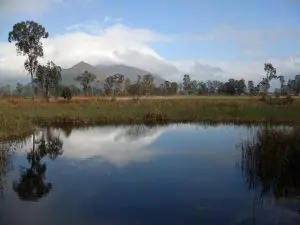If you happen upon a patch of brightly coloured flowers in a Hong Kong urban or country park, you may find they are also attracting brightly coloured butterflies. Chances are, these are swallowtails or close relatives, which include the largest and most eye-catching local butterflies – and are among the most spectacular butterflies you can find anywhere.
Hong Kong is home to 23 species of swallowtails, among an impressive tally of around 245 butterfly species, and watching and photographing these and other eyecatching butterflies can readily enhance outdoor outings. Plus, a casual interest in swallowtails might lead to an abiding passion for butterflies, which also include cryptically camouflaged species with a more subtle beauty, along with butteflies barely the size of a fingernail that are brown at rest, and flash bright blue in flight. Not all butteflies are nectar feeders; some favour fallen fruits. A few only become active as evening approaches. And while butterflies appear delicate, even flimsy, several Hong Kong species undertake lengthy annual migrations.
Identification basics – mormons and peacocks
As typical with natural history, if you’re to go beyond the “Ooh, that’s pretty!” stage of appreciating wildlife, you’ll need to learn how to identify at least some butterfly species, perhaps with the help of a field guide. If you start with the swallowtails, you’ll quickly learn that not all have elongated tail streamers like the birds called swallows they are named after. Indeed, none have proper tails, for “tails” on butterflies are extensions from the hindwings.
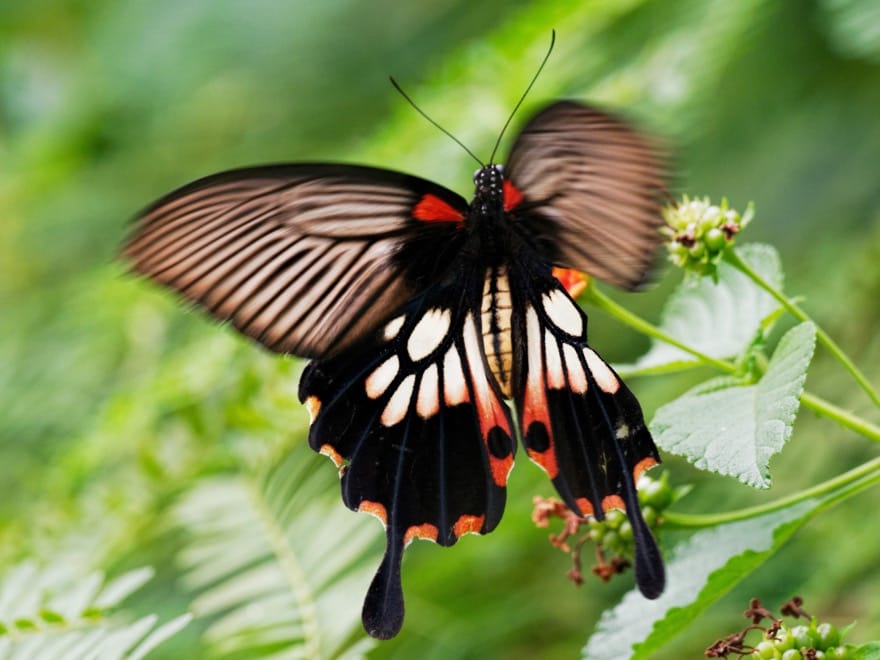
The commonest local swallowtail is a modest size, with a wingspan of around 8cm, and is mostly black with white bands or patches towards the rear of the wings. Its cousin the great mormon is far more impressive, as it’s around 50 percent bigger, and the females are a striking combination of black and white with small reddish patches, while males are shimmering blackish blue, also with reddish patches. Both mormons are relatively easy to observe, spending a couple of seconds or more gathering nectar from a flower, then flying to a nearby flower to feed.

Paris peacock is among other butterflies that behave similarly, and has a metallic green sheen, sometimes with a blue patch on each upperwing that might have been splashed on by an artist aiming to add a little “Wow!” factor.
Whirring wings – bluebottles, jays and the dragontail

If you’re watching these butterflies at a cluster of flowers, like the yellow and purple blooms of lantana, you might find another butterfly suddenly arrives, appearing as little more than a blur of rapidly beating wings as it pauses by one flower, wings still a-blur, then moves to another flower, and another.
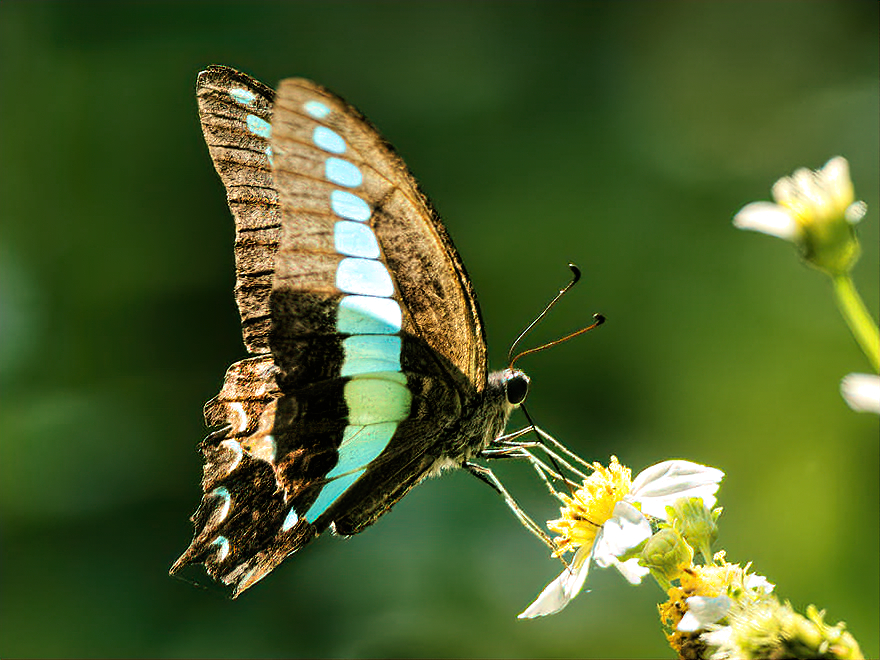
This could be a common bluebottle, with a large blue band on each black wing, or a common jay, with mottled black and soft blue wings, or a relative. You’ll have to be quick to note the features, and quick to press the shutter at the right time if you’re taking photos, as these butterflies seem determined to live life in the ultrafast lane, and soon dash off to find more flowers.
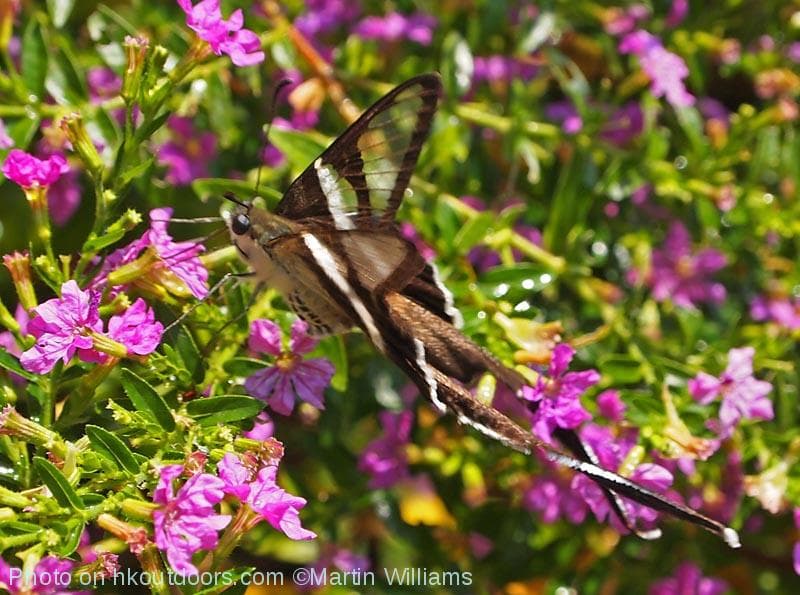
Hong Kong’s smallest swallowtail – the white dragontail – has even faster wingbeats, akin to a hummingbird. It’s black and white, with transparent forewings and long slender tail streamers you can best admire when one briefly alights. The caterpillars feed only on a scarce plant, Illigera, so the dragontail is uncommon, seen mainly at places such as Fung Yuen Butterfly Reserve, east of Tai Po Market.
Butterfly royalty – birdwings
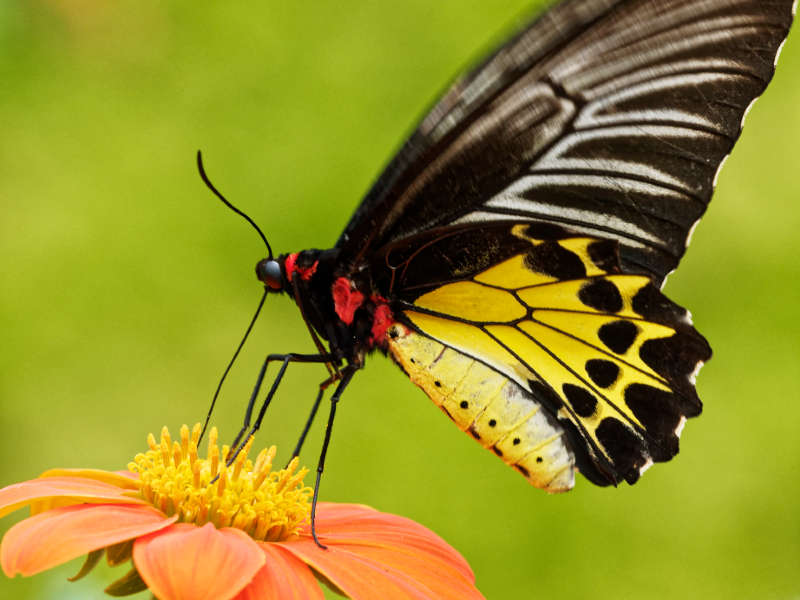
Fussy eating habits also result in the scarcity of Hong Kong’s two largest swallowtails – and largest butterflies, the common and golden birdwings, with a wingspan of up to 16cm: comparable to a couple of smartphones placed side by side. These have similar patterns, with black forewings graced by slim pale stripes, and mostly yellow hindwings. To my mind, it’s almost like having royalty drop by when one of these stops off to feed on nectar. Occasionally, too, I’ve seen them flying serenely over tree tops, their wings arrayed to form a wide triangular shape as they glide on by.
Toxic tigers
Some butterflies also seem remarkably relaxed as they flap from flower to flower near the ground. These include the common tiger, named for its bright orange and black patterning that also features white wing spots. You might expect these are tempting, easy targets for insectivorous birds. But their colours are a warning, as common tiger caterpillars feed on plants containing chemicals that are poisonous to most creatures, and retain these toxins when metamorphosing to adults. So birds that do try them quickly learn: never again.
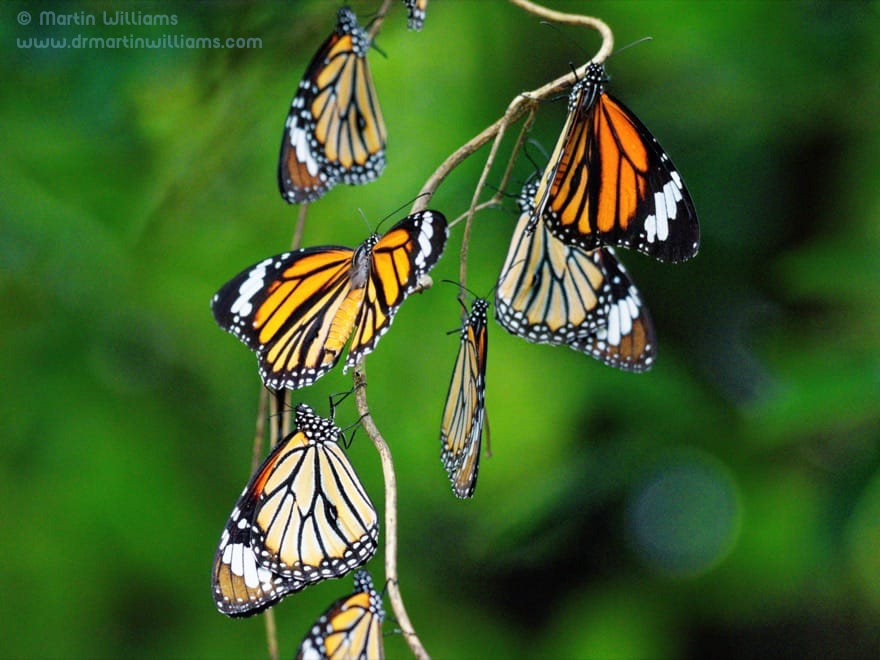
Common tigers are relatives of monarchs, the famously migratory butterflies of North America. They are likewise migrants, with thousands or tens of thousands arriving in Hong Kong during late autumn, and gathering at a few sites for a few weeks. But unlike the monarchs, their migrations are poorly known, with no one yet sure where they head after leaving here in late winter.
On guard! – great egg-fly
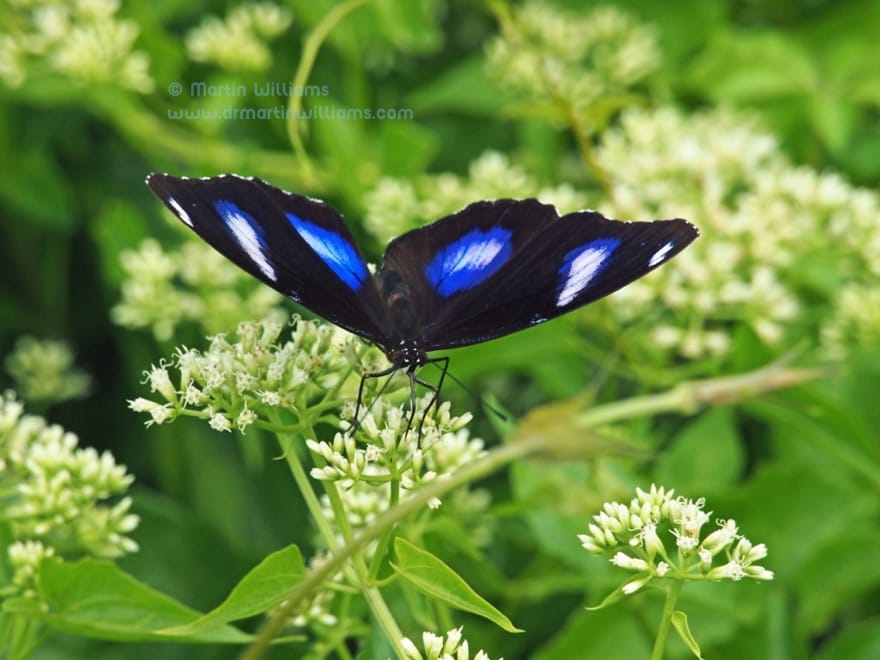
Another attractive butterfly is even more of a show-off. Male great egg-flies have black wings, with big smudges blending brilliant blue and light blue on their wings. They are territorial, perching prominently on leaves or footpaths, and watching for other butterflies – which they may chase after, unless one happens to be a potential mate. Unusually for butterflies, the drabber females may guard their eggs from predators such as ants and wasps.
Fruit-eating fauns and archdukes
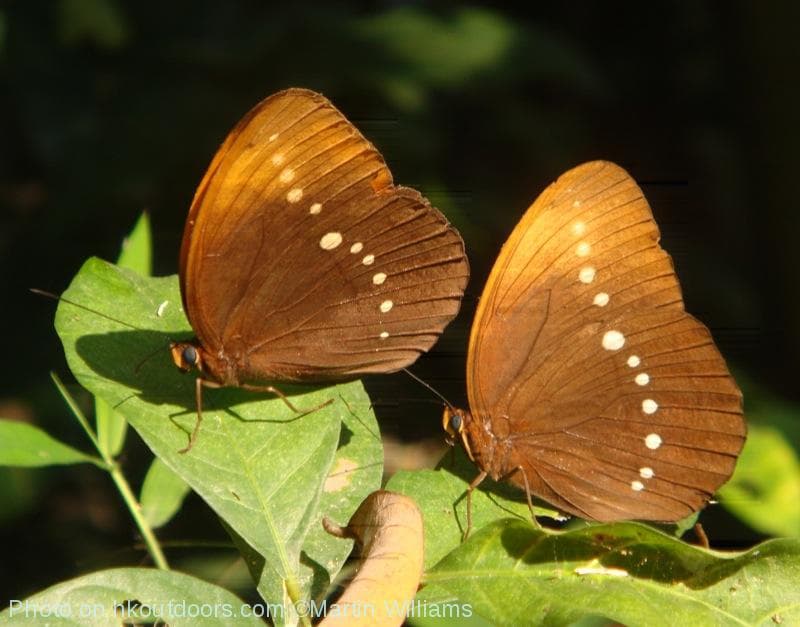
Large fauns are relatively drab, too, yet if you stroll woodland trails you will surely notice these brown butterflies, as they fly up from the ground just in front of you, revealing orange tints on their wingtips. They feed on fallen fruit, and there might be a dozen or more under a fig tree.
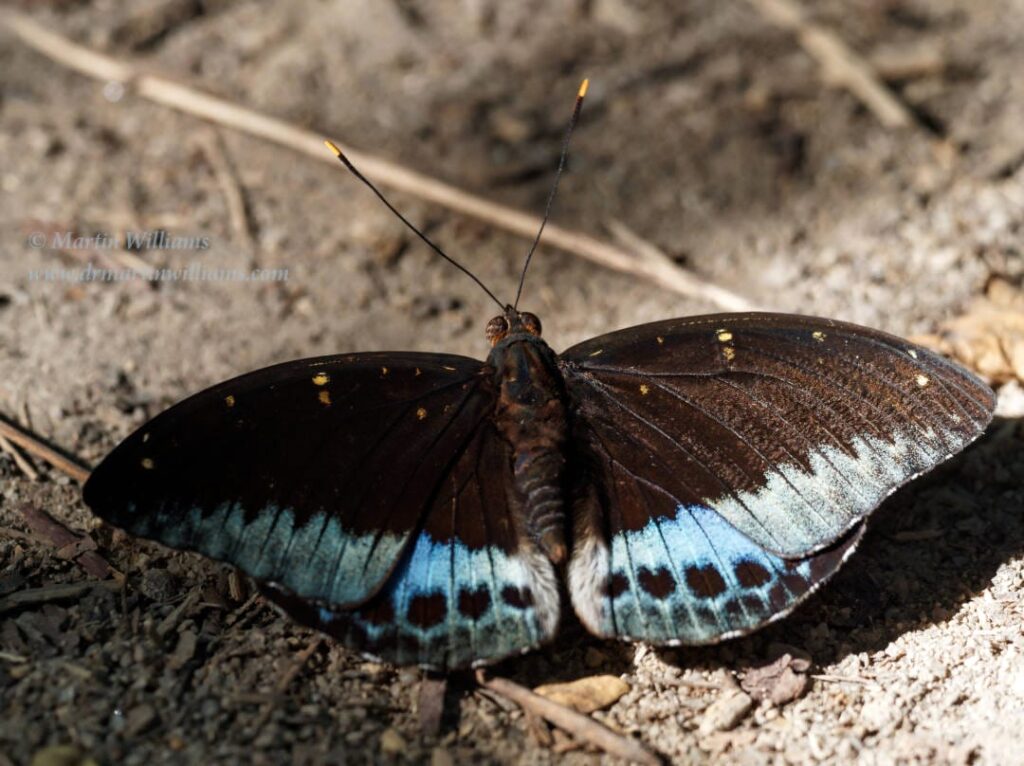
Nowadays, too, you might see more brighly coloured butterflies feasting on fallen fruit – the males blackish blue with pale blue hindwings, the females brown with bands of yellow spots. These are common archdukes, a more tropical species that was first recorded in Hong Kong within the past two decades, but is now widespread and increasing. Probably, it has become established here as the climate warms, especially in winter.
Quirky freaks of nature – gynandromorphs
Watching and recording butterflies also helps indicate other environmental changes, too often as areas of woodland and scrubland are damaged and destroyed by development. Then, there’s a chance of spotting one of the quirkiest freaks of nature: a gynandromorph.
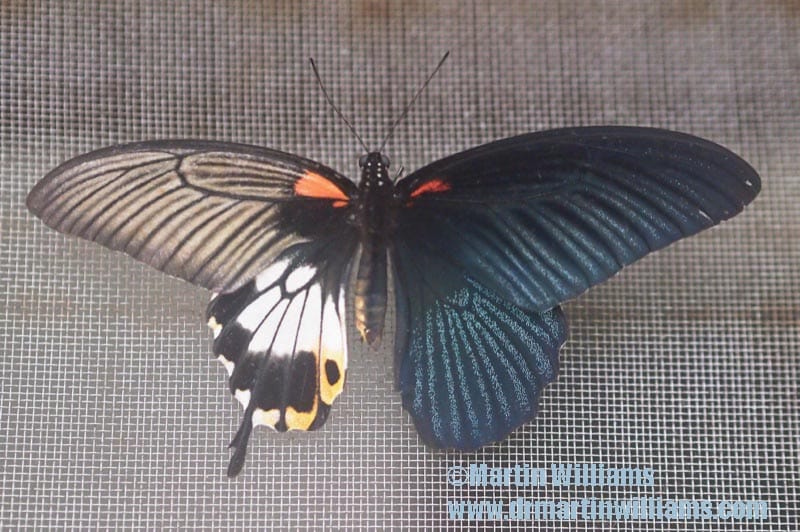
I’d never heard of gynandromorphs when my son pointed out a strange butterfly on our front door one day. It looked to me like two species in one individual, surely a hybrid, and I grabbed a few photos. But I soon learned it was actually two sexes in one individual: it had developed as a female on the left side, but a male on the right. And as it was a great mormon, the left and right sides looked very different, including as the male wings were bigger, and dark blue rather than black with white patches.
The gynandromorph flew off, and I didn’t see it again. Yet I received emails from local moth and butterfly experts, including Roger Kendrick, who likened the find to winning the Mark Six, and James Young, who noted the Hong Kong Lepidopterists’ Society had just two specimens of gynandromorphs. So even someone with a casual interest in butterflies might make a significant observation. And if not, there’s a lot of pleasure to be gained in watching and photographing butterflies, and in learning a little of their world, and the wonders it reveals.
Butterfly watching tips
You should be able to find butterflies in several urban parks, providing officials haven’t been too zealous in arranging tidying and pesticide spraying. Country parks and their margins are better, and there are a handful of butterfly gardens, with plants to attract wild butterflies, such as in Shing Mun Country Park.
Surely the best place, however, is Fung Yuen Butterfly Reserve [https://fungyuen.org/en/], which you can reach from Tai Po Market, by taking bus 74K or 75K, or minibus 20P, 20M, 20B, 20C or 20K to Fung Yuen Road. The reserve is across a footbridge over a stream at the end of the road, and there’s a HK$20 fee for visiting the conservation area (free for children under 12, or senior citizens). The reserve has a small shop, where you can find booklets to help with identifying butterflies.
[Written for the South China Morning Post]






